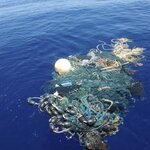Environment

3. Acacia catechu Willd. ‘Katha , khadira , khair’ (Catechu tree) :- Kols tribe of Uttar Pradesh use its leaves for blood dysentery (Chakravarthy et al., 1983). The extract of leaves is taken with milk (Maheshwari and Singh, 1987). Seeds exhibit antiviral, antiimflammatory, hepatoprotective and spasmolytic activity (Nirmal et al., 1985). The wood is very hard, durable, takes a fine polish, and is resistant to ants. It is used for house posts, boat buildings, cart construction, wells, agricultural implements, tool handles, rice pestles, oil and sugarcane mills etc. Goldsmiths prize the wood…

Effect of Sodium Chloride Salinity on
Growth and Ion Accumulation in Some
Halophytes
V. P. S. Shekhawat and A. Kumar
Biotechnology Laboratory, Department of Botany, University
of Rajasthan, Jaipur, India
K. H. Neumann
Institut fu¨ r Pflanzenerna¨hrung, Abt.Gewebe Kultur, IFZ,
Giessen, Germany
Abstract:
Effects of salinity on biomass production, water content, and ion accumulation
pattern in
Atriplex amnicola P. G. Wilson, Atriplex calotheca L., Atriplex
hortensis
L., Chenopodium album L., Salsola kali L., and Suaeda nudiflora Moq.
(all Chenopodiaceae) have been studied. The plants…

I love it! As soon as I start whining about how humans are always exploiting resources without checking first for sustainability, along comes a story to prove me wrong.
The Giant Pacific Octopus or GPO, who lives throughout the Pacific Northwest (if terrestrial terms) or Northeast (in oceanic terms), has never been the target of a federally managed commercial fishery. But occasionally people murmur about it, and some clever folks have decided that we'd better know a bit more about octopus biology before such a fishery (octopussery?) comes on the scene.
Right now, scientists still have very…

(This continues a discussion of the topic I started here, in Spanish, and in §5.4 of this published paper, in English. Not necessary to read those first; this blog stands on its own.)
There are many definitions of sustainability. Perhaps the most familiar one is the Brundtland report’s: "Sustainable development is development that meets the needs of the present without compromising the ability of future generations to meet their own needs."[1]
An admirable sentiment, but a suspicious one. Suppose I borrow money to buy a house that I will…

Bad news has come for Illex argentinus, a cousin of my own dear Dosidicus gigas (they're both in the squid family Ommastrephidae). As the scientific name suggests, I. argentinus is found and fished off the coast of Argentina--and the 2009 season has ended with the national catch in precipitous decline from years past.
Just a few days ago, I was talking about sustainable seafood and squid. I. argentinus, sometimes called the Argentine shortfin squid, is one of the many squid for which we simply lack enough scientific information to know whether they're being fished sustainably. This summer's…

You know there's a lot of garbage floating around out there when it gets a name like "Great Pacific Ocean Garbage Patch."
Scripps Environmental Accumulation of Plastic Expedition (SEAPLEX) researchers decided to find out if it lived up to its moniker.
It wasn't a pretty sight.
The Scripps research vessel (R/V) New Horizon left its San Diego homeport on August 2, 2009, for the North Pacific Ocean Gyre, located some 1,000 miles off California's coast, and returned on August 21, 2009. They surveyed plastic distribution and abundance, taking samples for analysis in the lab and…

I would like to thank the naked bike rider who had that slogan finger-painted on his back for the inspiration for this blog title.
Yes, a naked bike rider. Ouch. Husband and I were enjoying a leisurely stroll through Rittenhouse Square this evening. I was exulting over finding Garth's book amongst new neighbors in a bookstore (photo posted here), and we were waiting at the corner to cross the street. A cacophony of hoots and hollers and cheering distracted me, so I looked to my right at oncoming traffic. "Oh, a bike rally. That's nice. It's a lovely evening for that."
But then I did a double…

Scientific Name Polyalthia. longifolia (Soon)Thwaitea.
Family Annonaceae
Used Part Bark
Distribution Area Considered to be a native of the drier parts of Ceylon, very commonly cultivated all over India, in gardens and avenues.
Common Uses . The bark is bitter, acrid,cooling,febrigue and antihelmintic. It is useful in fever, skin diseases, diabetes, hypertension, helminthiasis and vitiated conditions of vata and pitta. The bark is also used as a febrifuge in some parts of India.
Similar crude drugs Polyalthia longifolia bark is used…

It is sad story of Jaipur (Rajasthan) India that water bodies are drying up. First was the lake of Ramgarh which has supplied water for hundreds of years has dried up due to illegal tree felling resulting in silting due to loss of soil binding on hills. Now is the lake at Amber fort of Jaipur which has dried up due to greed to develop tourist spot by making illegal construction blocking natural flow of water There is urgent need to attract global atttention how to restore these water bodies and restore the pinick city of Jaipur to its old glory. Suggestions are invited by experts globally.

With puskher lake dried up due to human settlement activities, pollution and destruction of vegetation urgent action is required to restore the old glory of the world famous Pushkar.
Ajmer city is centrally located in the state is important city from historical, religious educational, administrative and tourist point of view. Ajmer city mainly situated on Jaipur- Beawar road and important junction of meter and broad gauge railway line. In the south of city, Bhilwara city is situated. There are big industries of dyeing and printings. In the north of Ajmer city Kishangarh town is…